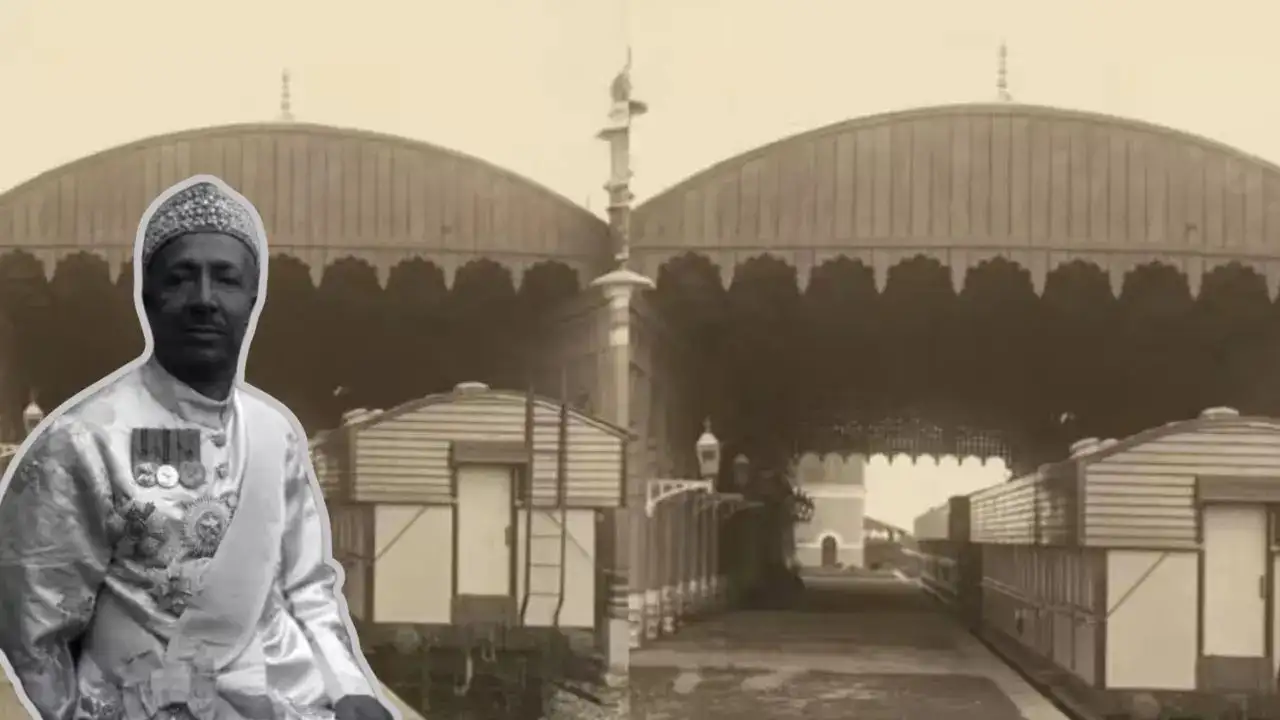Copyright timesnownews

India's railway system is recognized for its extensive scope and accessibility — spanning from foggy Himalayan valleys to arid deserts. Yet hidden in the core of Uttar Pradesh is a narrative that surpasses even the most lavish stories of Indian nobility. Picture this: a royal train that not only paused by the palace — it moved inside it. Welcome to Rampur Palace, the residence of one of India’s most intriguing Nawabs, Hamid Ali Khan, who experienced a life where opulence had no bounds. Forget about private jets and motorcades — this Nawab possessed his personal railway line and station within the confines of his palace. His wealth and taste for the extraordinary turned Rampur into a royal marvel — where a whistle and puff of steam signalled not a public journey, but the Nawab’s grand entrance. When Royalty Met The Railways During the British Raj, while India’s common man queued up for third-class tickets, the Nawab of Rampur travelled like a king on wheels — literally. In 1925, he commissioned the Baroda State Rail Builders to design a four-coach royal train, known simply as The Saloon. Each coach was a world of its own — adorned with Persian carpets, fine drapes, carved teak furniture and chandeliers that sparkled even on cloudy afternoons. The train was no less than a moving palace, fitted with a bedroom, dining room, kitchen, and even a recreation area. There were dedicated coaches for guards, servants, and cooks, because a Nawab never travelled without an entourage. And just to make things more regal, the Nawab built a private station inside Rampur Palace. A 40-kilometre-long railway line was laid between Milak and Rampur, linking the royal abode to the mainline. Trains didn’t just arrive for travel — they arrived for the Nawab’s pleasure. Fun Fact: The Rs 113-Crore Royal Station According to historical accounts and media reports, this private railway station is now valued at an estimated Rs 113 crore. That exceeds the expenses of multiple contemporary railway stations together — an indication of the Nawab’s unparalleled wealth and foresight. The station is described not only as practical but also as an impressive example of royal engineering. The platform shone with marble floors, elaborate jaali designs, and iron columns engraved with the Rampur emblem. Upon the arrival of the royal train, guards would sound trumpets, and attendants would unroll velvet carpets to greet the Nawab's return. A Train That Assisted During Partition What renders this tale even more extraordinary is the Nawab's compassion. Following the Partition in 1947, Nawab Hamid Ali Khan utilized his personal train to ensure the safe passage of families moving to Pakistan — an act that demonstrated his kindness during turmoil. In 1954, he gave two of his train coaches to the Government of India while keeping just two for himself. These coaches were utilized by Indian Railways until 1966, the year the Nawab died — signaling the conclusion of an era that combined aristocracy and modernity in the most impressive way. The Fall of Regal Railroads Following the passing of Nawab Hamid Ali Khan, the operations at the private railway station started to decline. His successor, Nawab Raza Ali Khan, was unable to uphold the same level of grandeur. Subsequently, the termination of the privy purse occurred, the government funding for ex-royals, which ultimately put a stop to the financial backing that maintained those grand indulgences. By the end of the 1960s, the previously vibrant royal station had become quiet. The rails became corroded, the stations accumulated dirt, and the sound of regal whistles disappeared into the past. The Legacy Of Nawab Hamid Ali Khan Today, the story of Nawab Hamid Ali Khan of Rampur stands as a brilliant illustration of India’s regal peculiarities — an era when creativity and excess had no boundaries. Although contemporary luxury frequently focuses on skyscrapers and high-end cars, the Nawab’s aesthetic was clearly old-fashioned — featuring a private railway station, a palace that welcomed locomotives, and a train that represented both strength and elegance. As one historian elegantly expressed, "The Nawab didn’t merely travel by train — he transformed the train into a royal experience." Interesting Tidbit To Conclude With: The Rampur Palace houses one of India’s most treasured private libraries, containing more than 17,000 rare manuscripts — evidence that the Nawabs of Rampur not only lived extravagantly but also wisely. Credits: Historical references from the British Library archives and images via @IndiaHistorypic.



